What does loggia mean to you? For some, this is just a place to store old things or ...
|
|
Patterned ceramic tiles excellent decoration of the kitchen, bathroom or hallway. But... |
The urgent question that torments everyone to live in private country houses ... |
How to remove mold from the ceiling
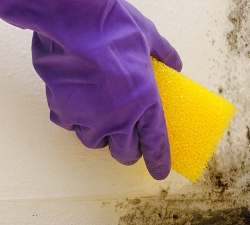
The problem of mold on the ceiling is quite relevant for many rooms, especially if they have increased humidity. There are several methods of combating this unpleasant phenomenon. We will consider about their features, technology and how to remove mold from the ceiling.
Table of contents:
- Ples on the ceiling: causes of formation
- How to remove mold from the ceiling: prevention and treatment
- Instructions on how to remove mold from the ceiling
- Ways to remove mold under a stretch ceiling
- Mold on the ceiling How to get rid and prevent
- How to treat the ceiling from mold: getting rid of mold in the bathroom
Ples on the ceiling: causes of formation
The mold on the ceiling is most often found in bathrooms. This is due to constant dampness and high humidity in the room. In order to avoid the appearance of this problem, a high -quality ventilation system should be organized in the room.
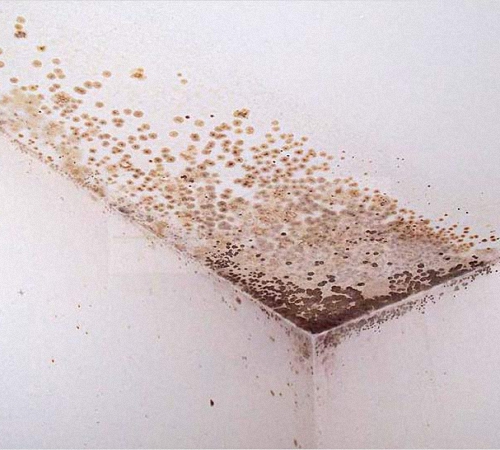
The wet environment and fungus lead to the fact that black spots appear on the surface of the ceiling, which are mold. To remove them, it will be necessary to make a lot of effort, therefore, before the appearance of mold, it is better to prevent it.
The main reasons for the appearance of mold are:
- the presence of a humid environment, which is especially characteristic of the bathroom and the kitchen - the most common cause of mold on the ceiling;
- lack of normal ventilation in the room;
- sharp temperature changes in the room, which leads to the formation of a convestation;
- The mold on the ceiling in the apartment appears as a result of the flooding of it by neighbors, it is not necessary to flood your apartment, if there is leakage between the bathroom and the wall, moisture gradually gets to your floor plate, thereby leads to the development of mold on the ceiling;
- the presence of fistulas and risers in the floor slabs between the floors, especially if they are made of non -galvanized steel;
- The presence of a calculated sewage joint in an apartment or neighbors, the presence of a leak in cast -iron sewer systems is not uncommon, therefore, it is because of them that mold appears on the ceiling.

Therefore, you should start getting rid of mold only after the reason for its appearance is known. For example, for rooms with excessive humidity, a powerful fan is enough.
If you do not fight mold, then in addition to the unpleasant appearance of the ceiling, it will also entail health problems. First of all, the presence of mold in the house is reflected in the lungs and leads to the onset of diseases on an infectious basis. In addition, the presence of a fungus affects many of the body systems, especially in children and people, with weakened immunity.
Propagating, the spores of the fungus fall on other sections of the house, the roof, walls, the floor, their presence, leads to the gradual destruction of the entire dwelling. Living in constant damp for several years, the house can simply crumble through the particles. Therefore, in the presence of the slightest suspicion of the development of fungus or mold, to start the fight against them should be immediately.
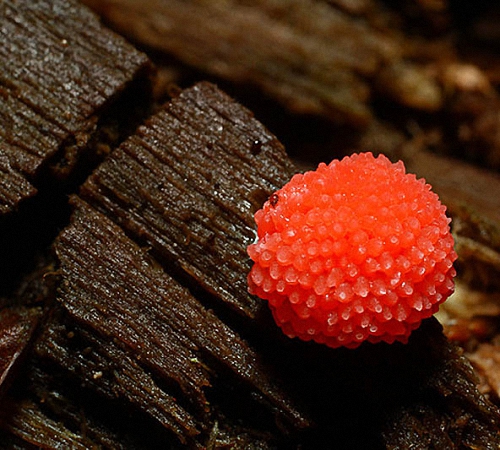
How to remove mold from the ceiling: prevention and treatment
In the absence of mold directly on the ceiling, however, if there are reasons for its appearance, a number of preventive measures should be carried out aimed at preventing the appearance of this unpleasant process.
The first option to combat the mold that has not yet appeared is copper sulfate. This tool has an antibactericidal effect, but contains toxic substances. Adding it to lime will give it a slightly bluish shade. This solution is whitewashing the ceiling in the room, exposed to the fungus.

Tip: If you plan to process with lime, a previously painted ceiling, this is not worth it. Since, in the end, a surface with a large number of divorces and spots on it will turn out.
To eliminate black mold on the ceiling, special antiseptic compounds are used in the form of primers. They are used in the repair, before applying the finish and after completing finishing work. The primer can not only destroy mold, but also prevent its appearance. Using an antiseptic, it is even possible to penetrate into concrete surfaces and prevent mold on them.
When choosing one or another composition of the primer, one should focus on the material from which the ceiling is built. There are many antiseptic compounds that are suitable for working on wooden, metal, plastered, painted surfaces.
If you already have mold on the ceiling in your house or apartment, then in this case, you should take care of treatment.
Tip: Before starting work to remove mold from the ceiling, you should find out the cause of its occurrence and eliminate it. Otherwise, all measures to get rid of mold will be in vain and soon it will appear again.
First of all, the finish is removed from the ceiling, if it was previously whitewashed by lime, then for this, a regular sponge is used, wetted by water. At the same time, you should work hard for a long time, since whitewashing based on lime is quite strong.

If the concrete base was defeated by a fairly thick layer, then it is best to use a spatula to remove it. Previously, the entire ceiling is wetted with water, which reduce the level of whitewashing adhesion and concrete base.
Another way to get rid of whitewashing is to apply a solution on its surface, which contains water, soap and soda based on calcium. The soap should be grated, ten liters of water, about five tablespoons of soda will be required.
After cleaning the surface from whitewashing, you should wait until the ceiling is completely dried. After that, it is covered with a primer with an antiseptic effect. Apply a primer in several layers, waiting for the drying of each of them. The duration of the primer is indicated in the instructions from the manufacturer. In order to process the seams between the plates, use the brush, it is able to fill the voids well.
After the antiseptic primer dries, the process of applying a solution with a penetrating effect follows. In this case, it will be possible to increase the level of adhesion of concrete and plaster solution.
Next, the ceiling is plastered, after the plaster dries, putty should be applied. Each of the layers of finishing materials applied to the surface of the ceiling alternates with the processing of the ceiling with a primer. After applying putty, the surface and its priming should be grinded. After that, the ceiling is painted.
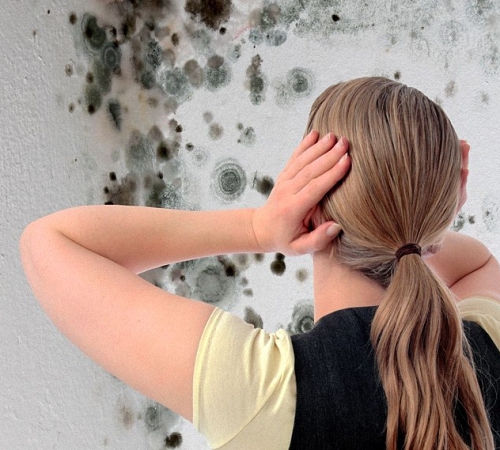
Instructions on how to remove mold from the ceiling
If the previous option for removing mold is not suitable for you, then use the following instructions for removing mold with a quick way.
In this case, it will require any detergent that contains chlorine -based substances. An excellent option will be the use of ordinary cheapest whiteness. To work, prepare gloves, since this solution is quite aggressive. In addition, you should wear a protective mask and glasses so that the liquid does not accidentally get on the mucous membranes of the eyes and nose.
This liquid first treats the affected areas of the ceiling, and after they dry the ceiling.
Tip: If you process the ceiling with a copper sulfate and stains appeared on it, then processing with chlorinated compositions will save you from them and the ceiling will acquire a perfectly white color.
If the lesions are not too large, then the use of soap solution with alkaline compounds will be enough. In this case, you should rub one laundry soap and pour it with two liters of warm water.
Another good remedy for mold on the ceiling is a solution of two tablespoons of tea tree oil and two glasses of water. To apply the solution, use a pulverizer.
Some experts recommend applying baking soda to the affected areas, and then vinegar. To apply it, also use a pulverizer. After the formation of the reaction between these substances, they are removed from the ceiling with an abrasive brush.

Ways to remove mold under a stretch ceiling
The stretch ceiling is most often made on the basis of PVC film. These materials are synthetic and are not amenable to the formation of mold or fungus on them. However, if increased humidity is present under the ceiling, then the mold still affects it. Poorly performed work on the installation, waterproofing and vapor barrier of the stretch ceiling leads to the fact that mold appears in the space between it and the usual ceiling. At the same time, getting rid of this problem is much more difficult than mold on an ordinary ceiling.
In the presence of mold directly on the stretch ceiling, you can be sure that it is much larger under the ceiling space. In such a situation, you should take care of removing and re -twisting the entire structure. To perform this work, you should use the services of specialists, since it is quite difficult to install a stretch ceiling yourself.
To remove the ceiling, it is primarily removed by its skirting board. The film is gradually delayed and the canvas is dismantled. Next, the treatment of affected areas should be carried out using an antiseptic solution. It is he who will help to overcome mold. After that, the spot is cleaned with a brush and the entire ceiling is washed with a damp cloth. If there are cracks on the ceiling, special attention should be made and also treated with an antiseptic.
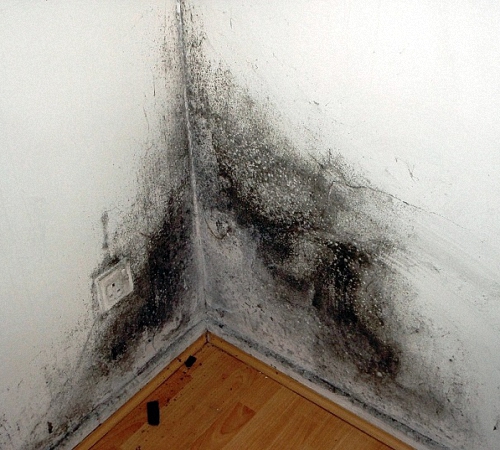
Further, cracks are treated with a sealant that will help prevent the development of mold inside them. For prevention, the entire ceiling is treated using a primer with an antifungal effect. At the final stage, the film is installed in place using special equipment. Then it is coated with a primer. In order to install the canvas without sagging, it is necessary to use a construction hair dryer during its installation.
Mold on the ceiling How to get rid and prevent
There are a huge number of ways to combat mold, but the easiest way to prevent their appearance. In order for mold not to appear in your house, use these recommendations:
- ventilate the room regularly;
- provide a high -quality ventilation system in the house;
- Do not leave wet underwear in the house, hang it out into the street, even in winter;
- Follow the tightness of all the pipes along which the water flows in the house;
- Follow the serviceability of ventilation ducts in the bathroom;
- During the repair, make sure that most materials are moisture resistance.
Keep in mind that for the formation of fungus and mold, a very high humidity, more than 80 percent and a temperature of about twenty degrees should be present in the room. Therefore, in the presence of too high humidity, the room should be ventilated without fail.
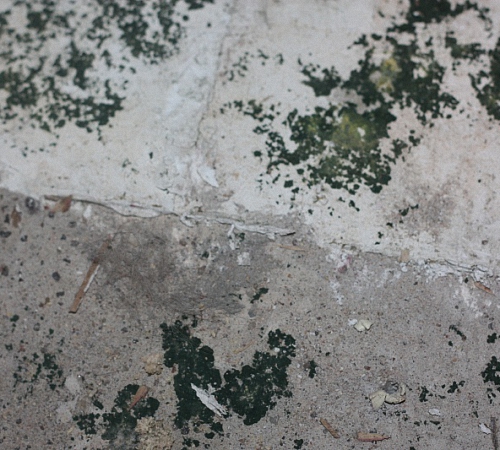
How to treat the ceiling from mold: getting rid of mold in the bathroom
For work to eliminate mold on the ceiling, use the materials in the form:
- spatula, medium size;
- gloves;
- sprayer;
- stairs;
- floor coatings;
- Means to combat mold.
Remove all furniture from the room if possible, lay a film or sheet on the floor. Pour water into the spray gun and spray the ceiling with it. Next, with the help of a spatula, remove the plaster on which there is a fungus.
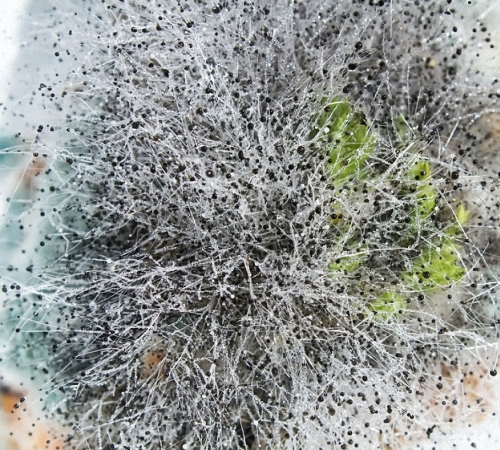
It is preferable if you remove the ceiling layer up to 10-15 cm. Since fungal spores penetrate enough into the walls. Next, wait for the ceiling drying, use an antifungal agent for these purposes. Among such drugs, substances are distinguished in the form:
- chlorine;
- copper sulfate;
- bleaches;
- soda and vinegar;
- soap.
It is preferable to choose a primer. It is applied to the base of the ceiling in two or three layers. Before applying the primer, read the instructions, while some of the compounds require additional breeding with water.
When using a copper sulfate, it should be diluted with water in a ratio of 50 grams of a 5 -liter of water. The surface is treated with a solution in several layers.
If you plan to use white, then it is diluted with water and is also applied several times. Keep in mind that before applying the composition the ceiling must be previously moistened. After two hours after applying whiteness, it is washed off the ceiling with ordinary water.

You forgot to mention the most
You forgot to mention the most important source of mold - our management companies.
Cool! Thank you very much, very
Cool! Thank you a lot, helped a lot !!!!
Not diluted whiteness?
Not diluted whiteness?